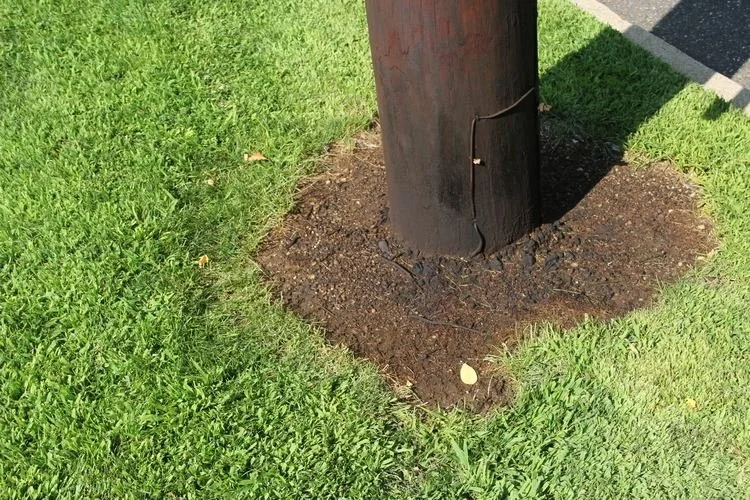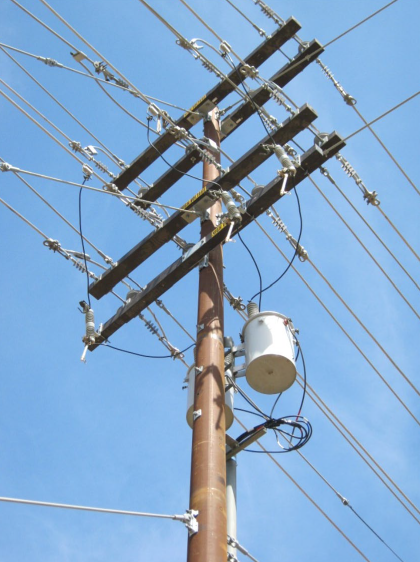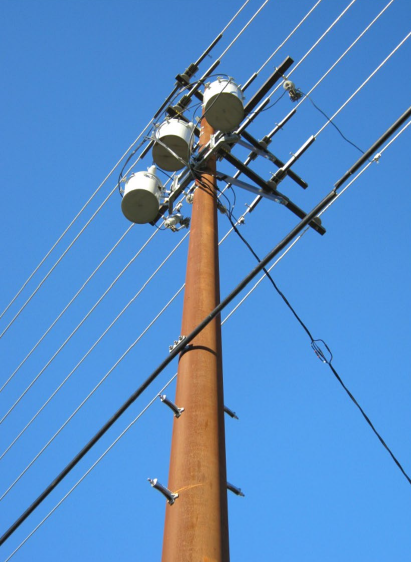The Penta Ban - what’s next?
/Utility poles support overhead power lines, telecommunication lines, and other utilities such as cable TV, fibre optic cables, and streetlights. They are also used for traffic signals, signs, and surveillance cameras. Along with their underground counterparts to supply us with water and natural gas, they are a critical component of the cardiovascular system of the towns and cities we live in.
Utility poles can be made from various materials, the most common being wood. According to the Edison Electric Institute, there were approximately 137 million wooden distribution poles in North America as of 2020.
In Canada, the most commonly used wood for utility poles is Western Red Cedar. Other wood species such as Douglas Fir, and Red Pine are also used for utility poles.
While some wood species have excellent natural insecticidal properties, the use of preservatives is necessary to maximize pole performance and service life, reducing the damaging effects of climatic conditions and decay hazards.
About half of the wooden utility poles are treated with Pentachlorophenol, also known as PCP or Penta in the trade.
First produced in the 1930s, Penta is a synthetic organic chemical compound used as a pesticide, herbicide, and fungicide. It is a white crystalline solid, soluble in organic solvents and is usually applied as a wood preservative to protect against decay, rot, and termites.
Penta has been used extensively in the past for preserving utility poles, however, its use is on a severe decline due to its high toxicity and slow biodegradation.
Image source: https://alchetron.com/Pentachlorophenol
Penta is a possible carcinogen and is in fact banned in most countries. In 2015, the Stockholm Convention banned Penta, classifying it as a persistent organic pollutant. The convention notes, among other health concerns, that Penta is “associated with carcinogenic, renal, and neurological effects.”
In 2022, the U.S. EPA cancelled the registration for pentachlorophenol. The EPA said the complete phase-out of pentachlorophenol would be conducted over 5 years: for the following 2 years, registrants may continue to produce, sell and distribute wood preservatives containing pentachlorophenol while wood treatment facilities transition to alternatives. After 2 years, pentachlorophenol will no longer be manufactured, sold or distributed in the U.S. After February 2024, wood treatment facilities will be allowed to use their existing stocks of pentachlorophenol to produce treated wood for an additional 3 years.
Meanwhile in Canada, on October 4th, 2022 Health Canada published a ‘Re-evaluation Note’ as an update to inform the public of the cancellation of all products containing pentachlorophenol. The registrant of products containing pentachlorophenol notified Health Canada of their intention to discontinue the sale of all products containing pentachlorophenol and requested a one-year phase-out period to exhaust existing stocks of products in Canada with users (in other words, wood treatment facilities). Consequently, Health Canada has cancelled the registrations of products containing pentachlorophenol, effective 4 October 2022, in accordance with subsection 22(3) of the Pest Control Products Act.
During the requested phase-out period, the use (treatment of wood) of the cancelled pentachlorophenol products is authorized to exhaust the existing stock of these products. Sale or installation of wood treated with pentachlorophenol is permitted during the same period in order to exhaust the treated wood in Canada (i.e., the existing inventory of treated wood, wood treated during the phase-out period, or treated wood imported during the phase-out period).
After 4 October 2023, the sale, import and installation of wood treated with pentachlorophenol is prohibited.
Wood treated with pentachlorophenol that was installed/already in service as of 4 October 2023 will not be required to be replaced/removed.
As the last remaining manufacturers of pentachlorophenol wind down their operations, Canada will see a lack of available alternatives to treat wood products with. While there are some contestants to alternative treatment options, such as Copper Arsenate, Creosote and Copper Naphthenate, switching over carries its own set of problems.
Aside from treatment times with materials other than Penta being very different, resulting in serious supply chain issues, there is also the underlying problem of the wooden utility pole shortage.
Check out our dedicated article about this specific problem for more details:
Is it time for steel?
As companies are researching alternative options, or looking for emergency supplies, many turn their attention away from wood as the base material for utility poles, and use steel.
Steel poles do not rot, they don't get infested with bugs, and they don't require constant maintenance. Steel poles contain no harmful preservative treatment chemicals to maintain their strength and extended service performance benefitting the users of poles in construction and the public domain which may have interaction with poles. Steel poles are non-toxic and have 75-100 percent recycled steel content at the manufacture. They pose no disposable issues and offer a long-term solution for regulatory pressures to buy recycled and recyclable materials. Steel poles can be re-purposed within their service life and are recyclable at the end of service life.
Click here to learn more about
Valmont®’s Rapid Response™ Steel Distribution Utility Poles
Sources:https://www.canada.ca/en/health-canada/services/consumer-product-safety/reports-publications/pesticides-pest-management/decisions-updates/reevaluation-note/2022/update-special-review-pentachlorophenol.htmlhttps://www.betterpoles.ca/https://www.utilityproducts.com/line-construction-maintenance/article/14248188/epa-officially-bans-utility-pole-preservative-pentahttps://www.tdworld.com/electric-utility-operations/article/21236517/epa-officially-bans-utility-pole-preservative-pentahttps://cen.acs.org/business/specialty-chemicals/Pentachlorophenol-way-utility-pole-preservative/98/i14https://alchetron.com/Pentachlorophenolhttps://www.stella-jones.com/en-CA/products/utility-poles






















